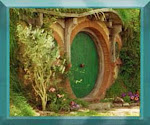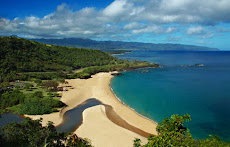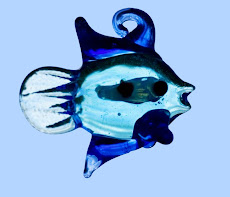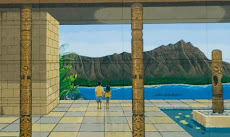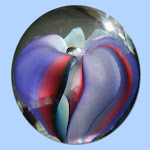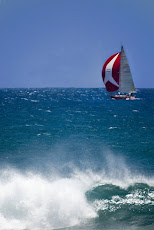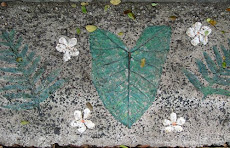| San Diego, California
 The annual Grunion Festival was held on a typical warm sunny day in July at Pacific Beach. Organizers and performers from the Juaneno Band of Mission Indians Acjachemem Nation and the Kumeyaay Nation organized a wonderful afternoon. People from near and far, gathered for the annual Grunion Festival, which is a revival of a tradition of the Southern California Indians. "Today is the event that brings the ocean, the desert and the mountain people together," said Joyce Perry, "a social event for the indigenous people and an educational event for the non-indigenous people. This is Abel's vision. He has been doing this for a long time." The annual Grunion Festival was held on a typical warm sunny day in July at Pacific Beach. Organizers and performers from the Juaneno Band of Mission Indians Acjachemem Nation and the Kumeyaay Nation organized a wonderful afternoon. People from near and far, gathered for the annual Grunion Festival, which is a revival of a tradition of the Southern California Indians. "Today is the event that brings the ocean, the desert and the mountain people together," said Joyce Perry, "a social event for the indigenous people and an educational event for the non-indigenous people. This is Abel's vision. He has been doing this for a long time."
Festival coordinators Abel Silvas and Joyce Perry, members of the Juaneno Band of Mission Indians were the main organizers. Abel is on the Juaneno Tribal Council; Joyce is the Tribal Manager and Repatriation Consultant. Abel also works as a comedienne, actor, and teacher. Joyce is also into education as the President of Payomkawichum Kaamalam, a non-profit educational organization that was the fiscal sponsor of this year's event.
 The Festival is a celebration of a fish that today is called the grunion. For thousands of years, this interesting fish has surfed in on a wave to lay its eggs at high tide after a new or full moon. Originally the fish was called Hashuupill a Kumeyaay/Diegueno word meaning fish out of water, or Ha-il, a Paipai word meaning waterworm. The Festival is a celebration of a fish that today is called the grunion. For thousands of years, this interesting fish has surfed in on a wave to lay its eggs at high tide after a new or full moon. Originally the fish was called Hashuupill a Kumeyaay/Diegueno word meaning fish out of water, or Ha-il, a Paipai word meaning waterworm.
Long ago grunion and mollusks were gathered at the ocean by the Kumeyaay, and Acjachemem people. As seasonal hunters and gatherers the Acjachemem lived and traveled throughout what is now Orange County, parts of San Diego, Riverside and Los Angeles counties. The Kumeyaay lived and traveled in what is now called San Diego County and northern Baja California.
Today at Pacific Beach, a community on the north of San Diego, nothing much has changed for the grunion, who still ride the waves in as they have for many centuries. For the people though, much has changed.
As the crowd of Festival-goers grew, the live entertainment began. The Fourwinds, a Native American music ensemble started the performances. They were followed by the Alta/Baja Kumeyaay Bird Singers & Dancers.
Running Grunion
 Abel introduced the exhibitors at the various arts, and educational booths that people visited throughout the day. He then introduced the audience to the Grunion. "Grunion, meaning grumpy, or agitated, was the word the Spanish gave to the fish," he explained. "Little did they know, they were not agitated, they were spawning. Two days after a full or new moon at high tide, the fish ride the surf onto the sand. The females bury their tails about four or five inches into the sand, and release their eggs. On the next couple of waves, the male fish do their thing." Abel introduced the exhibitors at the various arts, and educational booths that people visited throughout the day. He then introduced the audience to the Grunion. "Grunion, meaning grumpy, or agitated, was the word the Spanish gave to the fish," he explained. "Little did they know, they were not agitated, they were spawning. Two days after a full or new moon at high tide, the fish ride the surf onto the sand. The females bury their tails about four or five inches into the sand, and release their eggs. On the next couple of waves, the male fish do their thing."
After telling the traditional Acjachemem creation story, he gave the crowd some history. "Then comes historical times - hysterical is what we call it," he laughed. In San Diego, they consider prehistory the time before Cabrillo came in 1542. "Columbus came in 1492, but that was on the East Coast." Juan Cabrillo began "charting for safe harbors along the coast in 1542 and that is when he met with the Native people here." Other Spanish explorers came but didn't stay, "so we still consider that pre-contact. About 65 years later in 1769, the first European troops came to San Diego." July 16th the Portola's expedition began their ultimate goal of claiming California. On July 18th the expedition took off going north to find Monterey. The priests* who stayed behind recorded their first village here - Pacific Beach," said Abel. "They called us heathens in their writings. They also said at least fifteen women and children came out and greeted them happily. The Europeans were practically skeletons, we gave them food. This is considered the Thanksgiving of this area, and this is why we gather up and down the coast around this time."
 The Cupa Cultural Center (Pala) Bird Singers and Dancers who ranged in ages from young teens to older men followed Abel's presentation. They filled the air with their songs as they danced traditional steps to the rhythm of the gourds. The Cupa Cultural Center (Pala) Bird Singers and Dancers who ranged in ages from young teens to older men followed Abel's presentation. They filled the air with their songs as they danced traditional steps to the rhythm of the gourds.
Education and the Arts
Among some of the educational exhibits was a slide presentation, "Planet Earth Express" shown by Birch Aquarium at Scripps Institution of Oceanography. Jet Propulsion Lab (JPL)/NASA brought a telescope so people could look at the sun (only through a special filter) and later observe the whisper of a moon and the stars. There was also a booth where elders displayed the beautiful and useful traditional Kumeyaay basket that they had made. The intricate art of basketweaving continues today.
 The California Center for the Arts SUAVE (United Community for Arts in Education) program, based in Escondido had all kinds of interesting items on their table in their booth for the children to experiment with. Learning through the arts is the focus of SUAVE. It is an arts integrated approach to teaching and learning in multi-cultural and multi-lingual settings. At the Festival, program coaches Silvia Mejia (Juaneno), Berta Villaescusa, and Mindy Donners had as much fun as the kids did. Besides the work she does with the youth through SUAVE, Silvia travels around the area teaching cultural studies classes. She shares information her grandmother told her about the routes up and down the coast she (grandmother) took as a young woman. The California Center for the Arts SUAVE (United Community for Arts in Education) program, based in Escondido had all kinds of interesting items on their table in their booth for the children to experiment with. Learning through the arts is the focus of SUAVE. It is an arts integrated approach to teaching and learning in multi-cultural and multi-lingual settings. At the Festival, program coaches Silvia Mejia (Juaneno), Berta Villaescusa, and Mindy Donners had as much fun as the kids did. Besides the work she does with the youth through SUAVE, Silvia travels around the area teaching cultural studies classes. She shares information her grandmother told her about the routes up and down the coast she (grandmother) took as a young woman.
 Abel is also a part of the year-round SAUVE program that is brought into the area schools. The program merges traditional arts with the students' regular studies. "We are hired all year around to be in the classrooms with the teachers," Abel explained. "So it's no longer, 'put your math away it's art time,' now it's 'we are going to do arts and math.' It's very successful. In fact last year we got a Fullbright grant to go to India where we studied arts and education with a hundred teachers from all over India." Abel is also a part of the year-round SAUVE program that is brought into the area schools. The program merges traditional arts with the students' regular studies. "We are hired all year around to be in the classrooms with the teachers," Abel explained. "So it's no longer, 'put your math away it's art time,' now it's 'we are going to do arts and math.' It's very successful. In fact last year we got a Fullbright grant to go to India where we studied arts and education with a hundred teachers from all over India."
Naturally, there was plenty of food for everyone. Each year Mr. Brown, the Director of Education on the Kumeyaay reservation supplies the food and cooks it himself, with a little help. As the Director of Education, he is in charge of ninety children ranging from two to seventeen years old coming from the many Southern California Bands. The State Education Department has been funding the program over the last thirty years. Mr. Brown stressed the fact that no gaming funds are used. The program is funded by the California Department of Education and run by a Board of Directors, independent of the area's Tribal governments.
 Cultural practitioner Mingo Belardes, of the Juaneno Band of Mission Indians manned the Coastal Indian Village Exhibit. Mingo is the Curator for the 200-year old Blas Aguilar Adobe Museum and Cultural Center in San Juan Capistrano. "About 10 years ago I started reproducing artifacts I would see on site. Bone tools, stone tools, bows and arrows. I am still trying to gather more for the display." This is an ongoing project for Domingo. He gets requests to bring his good-sized display with him as he shares his knowledge about the people of the Acjachemem Nation with school children and adults at various public events. Cultural practitioner Mingo Belardes, of the Juaneno Band of Mission Indians manned the Coastal Indian Village Exhibit. Mingo is the Curator for the 200-year old Blas Aguilar Adobe Museum and Cultural Center in San Juan Capistrano. "About 10 years ago I started reproducing artifacts I would see on site. Bone tools, stone tools, bows and arrows. I am still trying to gather more for the display." This is an ongoing project for Domingo. He gets requests to bring his good-sized display with him as he shares his knowledge about the people of the Acjachemem Nation with school children and adults at various public events.
The museum where is Curator in San Juan Capistrano "depicts the history before contact with the Spanish, then the Mission or Rancho period and into the turn of the century and the present. It shows how the Indians adapted, became cowboys, yet they always had that contact with the Native part of life, they still knew the traditions and incorporated them into their way of life.
Who was Antonio Garra?
Abel then introduced Jose Rivera, Director of Education at the Marin Museum of the American Indian as his guru. He said Jose inspired him to research his own heritage. Jose has created Living History presentations that bring the listener back in time. Jose has "Apache blood and blood from the other side of what is the border."
At the Festival, he portrayed the Indian hero Antonio Garra, an early day social justice advocate. Garra was a Cupeno Indian who led the 1851 Indian tax revolt in Southern California. Garra was also known as a fighter for Indian rights such as due process in the American judicial system. Unfortunately he was unfairly tried and killed for his brave efforts because he was the leader of his people, like so many Indian leaders throughout the country were. He did not receive due process in the American judicial system.
The First Real Cowboys Were Indians
 "The contribution the California Indians have made, not just to our state heritage, but our national heritage has been overlooked for too long," said Jose. "Most historians will agree that the American cowboy didn't show up on the scene until the 1850's. And when he showed up, he found already in place a highly evolved cattle culture. Who were they? The Indians and the Mestizos, the international symbol of the U.S. around the world. But who came first the American cowboy or the California Indian Vaquero who was punching doggies and all those cowboy things in the 1770's here in California. In reality it was the Indian and Mestizos buckaroos who taught the American cowboy his trade and terminology. And that's where the American cowboy got the word buckaroos, because he was emulating the vaqueros." Jose explained that 30 years before Jesse Chissom blazed the famous trail that bears his name by bringing cattle up from Texas to Abilene and Dodge to take the cattle to market in Chicago, Southern California was already known as cow country. "So in reality the first great American cattle drive occurred in California and the American Indian vaqueros preceded the American cowboy, and that is the true contribution of California Indians to American culture." "The contribution the California Indians have made, not just to our state heritage, but our national heritage has been overlooked for too long," said Jose. "Most historians will agree that the American cowboy didn't show up on the scene until the 1850's. And when he showed up, he found already in place a highly evolved cattle culture. Who were they? The Indians and the Mestizos, the international symbol of the U.S. around the world. But who came first the American cowboy or the California Indian Vaquero who was punching doggies and all those cowboy things in the 1770's here in California. In reality it was the Indian and Mestizos buckaroos who taught the American cowboy his trade and terminology. And that's where the American cowboy got the word buckaroos, because he was emulating the vaqueros." Jose explained that 30 years before Jesse Chissom blazed the famous trail that bears his name by bringing cattle up from Texas to Abilene and Dodge to take the cattle to market in Chicago, Southern California was already known as cow country. "So in reality the first great American cattle drive occurred in California and the American Indian vaqueros preceded the American cowboy, and that is the true contribution of California Indians to American culture."
Living History Presentations
Jose's Living History Presentations are very powerful, helping the audience to really feel and learn the true California history that is not taught in schools. "I've been doing Living History presentations for about 12 - 15 years. It started out as a campfire program; I am a retired Forest Ranger. I started working with the California Council of Humanities and the Chautauqua Living History performances and I felt it was very important to have the voice of the Native Californian Indians come back and be revisited because they have been overlooked for so long. Many people don't realize all the great leaders that came out of California among the indigenous people," said Jose.
 "Like Antonio Garra, if you look at his tactics and what he tried to do, he was doing the same thing Tecumseh and Sitting Bull were doing, unifying traditional people who were never unified before to fight a common enemy. The living history performance is a way to make that history come alive. When you think about it, Antonio Garra revolted against the United States for the same reason the American founding fathers revolted against England. Things like taxation without representation, and failure of due process in the judicial system. So here we had a southern California Indian revolting against the United States for American principals." "Like Antonio Garra, if you look at his tactics and what he tried to do, he was doing the same thing Tecumseh and Sitting Bull were doing, unifying traditional people who were never unified before to fight a common enemy. The living history performance is a way to make that history come alive. When you think about it, Antonio Garra revolted against the United States for the same reason the American founding fathers revolted against England. Things like taxation without representation, and failure of due process in the judicial system. So here we had a southern California Indian revolting against the United States for American principals."
Jose explained what a terrible time-period that era was for Native people. "There was such a repressive tax in California, the law was basically slavery, the Indenturement Law. That law and the Vagrancy Law were thin facades for Indian slavery in California."
"A lot of history is not known."
California Indians Today
Jose continued, "Many people say the California Indians are now extinct. When you come to something like this, the Grunion Festival or the Earth Renewal Dance, you start seeing that in reality, California Indians have never disappeared, and that through the culture of tenacity they have made California the hotbed for federal tribal recognition nationally. There are more cases of federal tribal recognition in California."
"A lot of those cases were based out of the Determination Period because they were previously recognized as sovereign people and it just so happened that a lot of the problems the California Indians have faced in contemporary y times is because of John Warner. John Warner was the first Senator of California. He led the California Caucus to not ratify the 18 treaties signed in California. John Warner was the one who put the Injunction of Secrecy over that failure to ratify those 18 treaties for 50 years. So, Warner had quite a bit to do with the situation of the California Indians even today. It was because of the selfishness of Mr. Warner. He wanted the Hot Springs, he wanted the village, Cupa and that is how the California Indians were treated statewide."
California Indian Trail of Tears
 What about the Springs today? "The springs are about 40 miles east of here. Traditional people went to the beautiful Hot Springs for healing. The people were forced out of there. This was a California Indian Trail of Tears. They (directed by Warner) just rounded them [the Indians] up and marched them out of there to Pala. In ancient days, families would get together, they would sing songs, it was so nice, it was paradise. Today the Hot Springs area is a resort." What about the Springs today? "The springs are about 40 miles east of here. Traditional people went to the beautiful Hot Springs for healing. The people were forced out of there. This was a California Indian Trail of Tears. They (directed by Warner) just rounded them [the Indians] up and marched them out of there to Pala. In ancient days, families would get together, they would sing songs, it was so nice, it was paradise. Today the Hot Springs area is a resort."
Jose has created three different Living History California Indian Chatauqua presentations from Northern, Central and Southern California. At the Marin Museum of the American Indian, he talks about all the native cultures on the continent. "We have a summer camp coyote program where we have kids from six years to twelve years old for one week. Every day we highlight a different Native American region. We include regional foods also. So it's a Native American summer camp. We also provide a lot of scholarships. We work a lot with the Native People in the Bay area."
Find out what Jose is up to at www.MarinIndian.com . He plans to update the site soon. You can also hear him on the California Indian Radio Project aired on NPR and KPFA.
Project Pacific
Another educational booth displayed information on the ocean how they helped the grunion survive. Project Pacific is devoted to actions that benefit the ocean. Because of their work, the city of San Diego will not to rake the seaweed or kelp during the time their eggs are in the sand, giving the Grunion a better chance for their eggs to mature. Their web site is www.projectpacific.org .
"Tree" Cody
 Robert Tree Cody (Maricopa and Dakota) internationally known Native American flutist emerged from the ocean smiling, carrying his boogey board under his arm. Later he would perform, now he was 'surfing'. His wife Marlene (Assinibone Yankton Sioux, Pawnee, Mohave), their four sons and other family members were all having a great time. Marlene's voice can be heard on several of his recordings. Robert Tree Cody (Maricopa and Dakota) internationally known Native American flutist emerged from the ocean smiling, carrying his boogey board under his arm. Later he would perform, now he was 'surfing'. His wife Marlene (Assinibone Yankton Sioux, Pawnee, Mohave), their four sons and other family members were all having a great time. Marlene's voice can be heard on several of his recordings.
Tree talked about the festival, "the Grunion Festival represents many tribes that are still present in Southern California. I have been doing this for four years with Abel. Each year it gets bigger and better. I had a great time boogey boarding out there today."
Tree picked up a flute at his Grandpa's house when he was only five years old. He taught himself and along the road, also learned from a few teachers he met. "I keep on learning, never stop learning."
About 25 years ago he started blending traditional music with modern music from different country's and has performed with people from cultures. Though he can't read music, it comes from "my mind, my spirit, my heart, the three elements that brings out my music."
He mentioned that many are aware that Iron Eyes Cody, is his dad. "Despite the controversies, people only hear one side of the story." He explained, "I know my father, I am his true son. My brother and I were adopted by him when we were babies. He was the one who showed me the [entertainment] business. He took me to Hollywood. I was doing Walt Disney shows with my dad when I was about eight years old."
Tree was scheduled to perform with Janice-Marie Johnson in the evening. "I have been working with the famous, Janice-Marie Johnson with a Taste of Honey. She sings rhythm and blues. We have done a lot of shows together and tonight she will come from Pasadena to perform a duet with me."
 Later in the evening Tree performed a few songs on his flute, and was then joined by Janice-Marie for the Grande finale. They performed "Let Love Rain Down", which Janice-Marie wrote as a tribute to her Native American heritage. "Let Love Rain Down" is from her current release Hiatus of the Heart and was inspired by her Stockbridge-Munsee Indian roots. They have recorded an album together, which will be released soon. Tree accompanies Janice-Marie, singing in Lakota, a side not many people know about him. To find out where Tree is touring, look up www.treecody.com. And to find out more about Janice-Marie go to http://artists2.iuma.com/IUMA/Bands/A_Taste_Of_Honey. Later in the evening Tree performed a few songs on his flute, and was then joined by Janice-Marie for the Grande finale. They performed "Let Love Rain Down", which Janice-Marie wrote as a tribute to her Native American heritage. "Let Love Rain Down" is from her current release Hiatus of the Heart and was inspired by her Stockbridge-Munsee Indian roots. They have recorded an album together, which will be released soon. Tree accompanies Janice-Marie, singing in Lakota, a side not many people know about him. To find out where Tree is touring, look up www.treecody.com. And to find out more about Janice-Marie go to http://artists2.iuma.com/IUMA/Bands/A_Taste_Of_Honey.
Midnight and the Grunion
The cool night air drew many to the warm campfire in the sand. Around 10 p.m. people starting watching the incoming high tide for Grunion. Around midnight, the Grunion arrived on the waves and wiggled in the sand. Mission accomplished, they caught another wave back out to sea. In a couple of weeks, baby grunion will appear and they too, will catch the tide out to sea.
Perhaps one day, you too will witness the Grunions wiggling in the sand like the Southern California Indians have for thousands of years.
The Festival was sponsored by theViejas Band of Kumeyaay Indians, The City of San Diego Commission for Arts and Culture, Abel Silvas, Szekey Family Foundation, Hearthside Homes Inc , and The Westerners - the First People of Earth Mother (Payomkawichum Kaamalam).
* When the Spanish "conscripted" - or enslaved local Indians forcing them to build the missions, they consistently named the Indian groups after the mission whose jurisdiction they were under. The 25,000 to 30,000 Natives in the area were named the Diegueno. Kumeyaay was created by Native people in the 1970's and it includes all the Yuman-speaking Indians of Imperial County over the mountains east of San Diego County.
|














